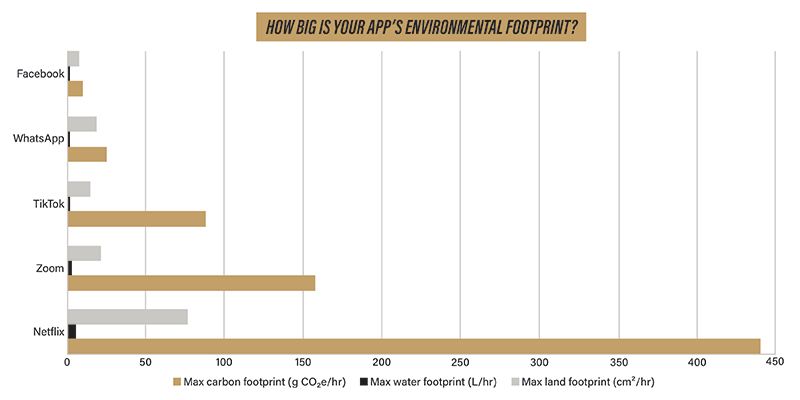Add Video Calls to the List of Polluters

Trying to save the world? Turn off your video camera next time you’re on Zoom! It will not only hide your pandemic hair and guest bedroom clutter but will also measurably reduce carbon dioxide emissions.
Sound ridiculous? It’s not really.
Just one hour of videoconferencing or streaming, for example, emits 150-1,000 grams of carbon dioxide (a gallon of gasoline burned from a car emits about 8,887 grams), requires 2-12 liters of water and demands a land area adding up to about the size of an iPad Mini, researchers say.
But leaving your camera off during a web call can reduce these footprints by 96%. Streaming content in standard definition rather than in high definition while using apps such as Netflix or Hulu also could bring an 86% reduction, the researchers estimated.
The study, conducted by researchers from Purdue University, Yale University and the Massachusetts Institute of Technology, is the first to analyze the water and land footprints associated with internet infrastructure in addition to carbon footprints. The findings are published in the journal Resources, Conservation & Recycling.
“If you just focus on one type of footprint, you miss out on others that can provide a more holistic look at environmental impact,” said Roshanak “Roshi” Nateghi, a Purdue professor of industrial engineering, whose work looks to uncover gaps and assumptions in energy research that have led to underestimating the effects of climate change, in a news release.
Traffic rising
A number of countries have reported at least a 20% increase in internet traffic since March. If the trend continues through the end of 2021, this increased internet use alone would require a forest of about 71,600 square miles – twice the land area of Indiana – to sequester the emitted carbon, the study found.
The additional water needed in the processing and transmission of data would also be enough to fill more than 300,000 Olympic-size swimming pools, while the resulting land footprint would be about equal to the size of Los Angeles.
The team estimated the carbon, water and land footprints associated with each gigabyte of data used in YouTube, Zoom, Facebook, Instagram, Twitter, TikTok and 12 other platforms, as well as in online gaming and miscellaneous web surfing. As expected, the more video used in an application, the larger the footprints.
Because data processing uses a lot of electricity, and any production of electricity has carbon, water and land footprints, reducing data download reduces environmental damage.
“Banking systems tell you the positive environmental impact of going paperless, but no one tells you the benefit of turning off your camera or reducing your streaming quality. So without your consent, these platforms are increasing your environmental footprint,” said Kaveh Madani, who led and directed this study as a visiting fellow at the Yale MacMillan Center.
The internet’s carbon footprint had already been increasing before COVID-19 lockdowns, accounting for about 3.7% of global greenhouse gas emissions. But the water and land footprints of internet infrastructure have largely been overlooked in studies of how internet use impacts the environment, Madani said.
